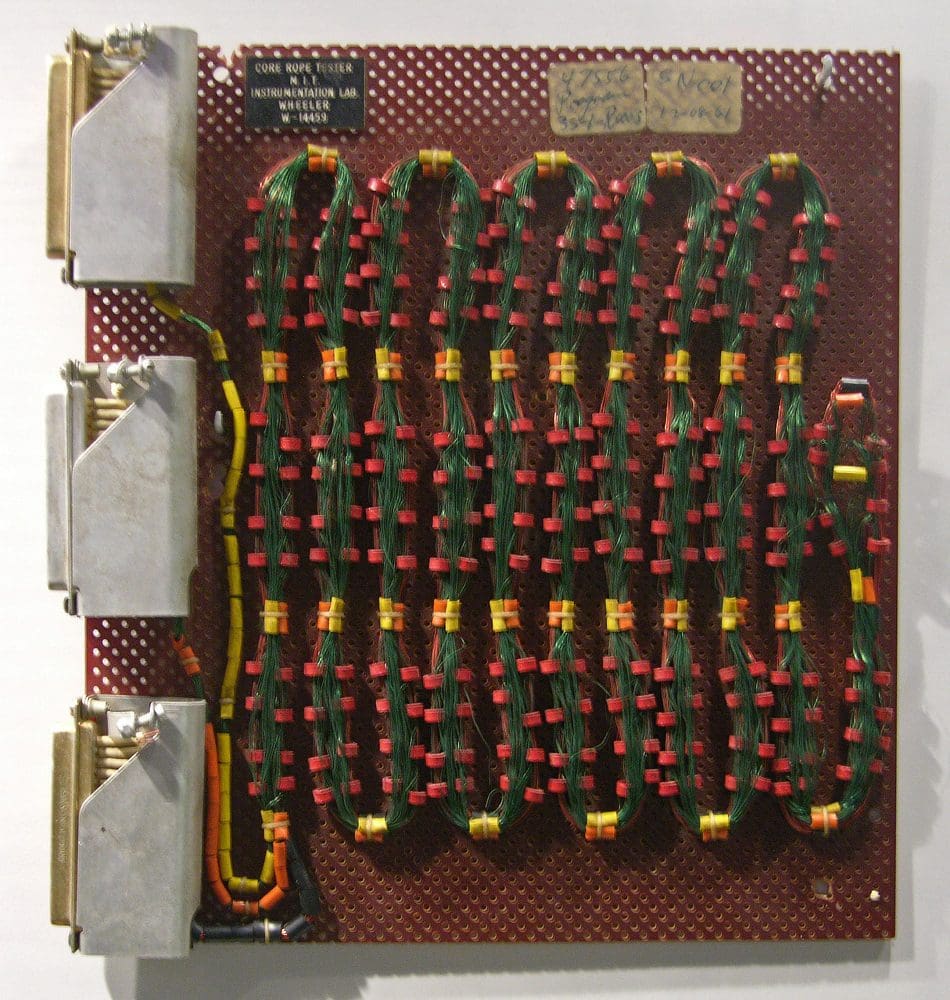It wasnt mainly used in commercial environments due to high production costs, amongst other factors.
It was, however, incredibly reliable, even in challenging environments.
Both core rope memory and magnetic core memory were used in the AGC or Apollo Guidance Computer.

Core rope memory should not be confused with magnetic core memory, a form of RAM.
Contents
How Does It Work?
Core Rope Memory has a similar structure to core memory, at least at first glance.
They both use a series of wires and metal cores.
The wiring concept, though, is incredibly different.
In core memory, each core stores a single bit of data in its magnetic field.
In core rope memory, data isnt encoded in the cores magnetic field.
Instead, its encoded by whether or not the sense wire runs through or around the core.
Another significant difference in core rope memory is that multiple sense wires can run through each core.
This allows various bits to be stored per core, significantly increasing the storage density.
How Was It Made?
Core memory is difficult to make.
In the 1960s, this process was done by hand.
Most of the workforce weaving the core rope memory for the Apollo guidance computer were women.
You couldnt just install a software update if you found a bug.
Once a rope was complete, it couldnt be changed at all.
This inability to provide software updates was difficult enough for most software to deal with.
The cost of manufacture, however, was a bigger problem though.
It was just too costly to make, even if it did offer excellent storage density for the time.
Conclusion
Core Rope Memory is a form of Read Only Memory, or ROM.
Core rope memory worked by weaving many sense wires through or around several cores.
The coding of a bit was determined by the wire going through or around a particular core.
It needed to be woven by hand, making manufacturing time-consuming, expensive, and error-prone.
This factor limited broader interest in the technology.